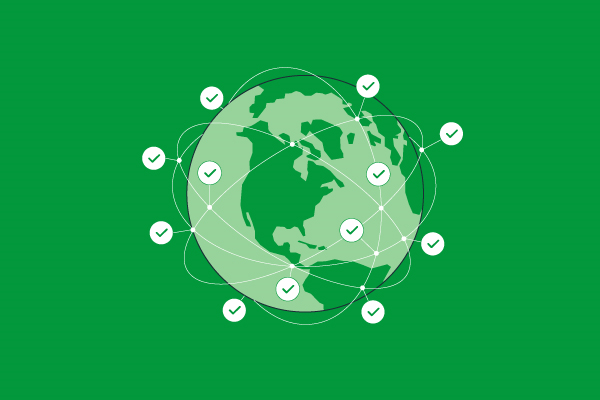As the trend of online payments increases, fraudsters are also following suit. Nowadays, most customers prefer shopping online regardless of their geographical location. People are increasingly choosing to purchase items online, such as furniture, fashion, and fast food, which were traditionally bought in physical stores.
Online shopping has gained immense popularity worldwide. This year, analysts expected there to be 218.8 million digital buyers, marking a 1.9% annual increase from 2022. Owing to the increasing number of customers who store their card details and make online payments, fraudsters are seizing the opportunity, leading to a rapid rise in online payment fraud.
To prevent your business from falling prey to online payment frauds, you must first understand what online payment fraud consists of and how it happens to businesses.
What is online payment fraud and how does it work?
E-commerce and online payment fraud are prevalent forms of illegal activities conducted by cybercriminals. The victims, typically online users, suffer losses such as financial, personal information, and property, as a result of these fraudulent online transactions.
As the number of online transactions continues to rise and the accessibility of internet technology expands, customers face numerous risks to their personal information and security. Online payment fraud is a significant challenge associated with online payment systems. The growing demand for online transactions has led to a surge in new fraudulent methods.
According to a recent report by the Federal Trade Commission (FTC), Consumers lost nearly $8.8 Billion to Scams in 2022. This reflected an increase of over 30% in comparison to the previous year. These losses showcase the gravity of the situation and the risk posed by payment frauds.
Online payment fraud can happen in different ways, whether it involves using a card or not. Any unlawful online transaction carried out by cybercriminals can be categorized as online payment fraud. This includes unauthorized online payments, fraudulent requests for refunds or cashbacks, and instances where merchandise is lost due to non-payment processing or false charges. However, the most dangerous type of fraud that affects both cardholders and online merchants is when payments are made online without using a card, but with stolen card information. This fraud occurs when a cybercriminal unlawfully obtains someone’s payment card details or personal information and attempts to make unauthorized purchases or transactions.
While most anti-fraud systems are capable of identifying and stopping fraudsters, some criminals employ clever methods to carry out their illicit activities. They may try to deceive the anti-fraud systems by utilizing an IP address similar to that of the cardholder or configuring their web browsers to imitate the victim’s browser settings, among other tactics.
If successful, fraudsters can cause financial harm to both the cardholder, who loses money, and the business that approves a fraudulent transaction. In such cases, merchants become responsible for the chargeback amount if the legitimate cardholder lodges a complaint with their bank.


How to detect payment fraud in online transactions?
As fraudsters develop new techniques, it becomes crucial to have advanced technology and intelligence to combat them. The identification of the culprits and their origins holds great significance. To achieve this, businesses must possess suitable technology, support, and services that can efficiently detect online fraudulent transactions and prevent their occurrence. Here are some key identifiers to look out for:
Address Verification
When you make an online payment without using your physical card (card-not-present), the payment gateway will ask the issuing bank to verify your information through an Address Verification Service (AVS). During the purchase, you will need to enter your billing address and postcode. If there is a partial or no match between the provided information and the AVS records, the transaction will require additional investigation.
Check CVV
The three-digit code found on the back of a card, known as the Card Verification Value (CVV), helps merchants detect and prevent online fraud. If the CVV entered during checkout doesn’t match the card, the transaction will be rejected. Merchants who request both the CVV and use an Address Verification Service (AVS) increase their chances of successfully resolving any payment disputes raised by cardholders.
Payer Authentication
3D Secure payer authentication is a powerful tool that helps prevent online fraud. The latest version of 3D Secure, known as 2.0, requires customers to use at least two different ways to prove their identity. This could be something the customer knows: a one-time password, an SMS code, a PIN, a password, personal information, or answering a security question. It could also be something the customer owns. This includes their credit or debit card, a key fob, a mobile device, a token, or a wearable device. Sometimes biometric data like fingerprints, iris scans, facial recognition, or voice recognition will also be employed. With 3DS 2.0, there is also improved communication between the customer’s device and the issuer, allowing for Risk-Based Authentication (RBA). Based on the issuer’s assessment, the authentication process can either proceed smoothly if the transaction is identified as secure, or require additional verification from the user through a challenge flow.
Pay Attention to Email ID
An email serves as an online identification document of a customer. It’s helpful to verify the authenticity of an email to combat online fraud. To easily determine the owner of an email, you can utilize a reverse email lookup service.


Identify Devices
Similar to individuals, devices possess distinct fingerprints that cannot be altered by fraudsters. Device identification focuses on analyzing the computer itself rather than the user. It examines factors such as the operating system, internet connection, and browser to determine if any risks or declines have been associated with it. Implementing this straightforward measure can effectively prevent and identify potential instances of online fraud, ensuring that they do not go unnoticed.
Look out for Large Transactions
To prevent fraud and chargebacks, it is important to set a limit that triggers an alert for transactions exceeding a certain amount. This helps stop fraudsters who use stolen cards from making large purchases before the card is blocked. If a fraudulent charge does occur, the business will be responsible for the costs involved, which can harm their reputation and lead to higher payment acceptance expenses.
Check User Location & Shipping Address
Typically, genuine transactions share matching billing, shipping, and IP addresses. If there is a significant gap between different addresses in a transaction, it should raise concerns and warrant further investigation. However, certain legitimate customers opt for a virtual private network (VPN) to maintain online anonymity. It’s worth noting that fraudsters may also utilize VPNs. In such cases, additional factors can be considered to cross-verify the transaction’s origin when creating a profile of the individual involved.
When sending products abroad, businesses need to be cautious and thoroughly research their customer base. If they notice any suspicious signs in specific markets, it is wise to ask for additional identification verification, such as directly contacting the company, and conducting further checks. These measures help reduce the risk of fraud.
Be Aware of Fake IPs
Fraudsters often use proxies as a way to hide their true identity. Proxies act as middlemen, transferring information between computers while concealing the actual IP address of the sender. Merchants can employ a technique called proxy piercing to determine if a potential fraudster is using an IP proxy.
Oceanpayment helps you with online fraud detection using machine learning + AI Big Data technology
As technology progresses and billing systems evolve, there are various methods available to reduce the impact of fraudulent online payments. Oceanpayment is an all-in-one payment gateway solution that can help prevent fraudulent activities as well.
Additionally, an in-depth analytics feature allows merchants to monitor recurring revenue in real-time, 24/7. This helps identify any potential losses caused by online payment fraud or customer churn. Oceanpayment also offers 3D secure payer authentication services, the most sought-after online payment fraud prevention tool. It also keeps an eye on device IDs to check if they have been marked as suspicious or involved in fraudulent activities by other users. Since fraudsters can’t fake a computer’s unique identity, this method is effective in safeguarding your business from online fraud. It also allows you to restrict the number of unsuccessful transactions, to prevent chargebacks on larger transactions.








Comments are closed.